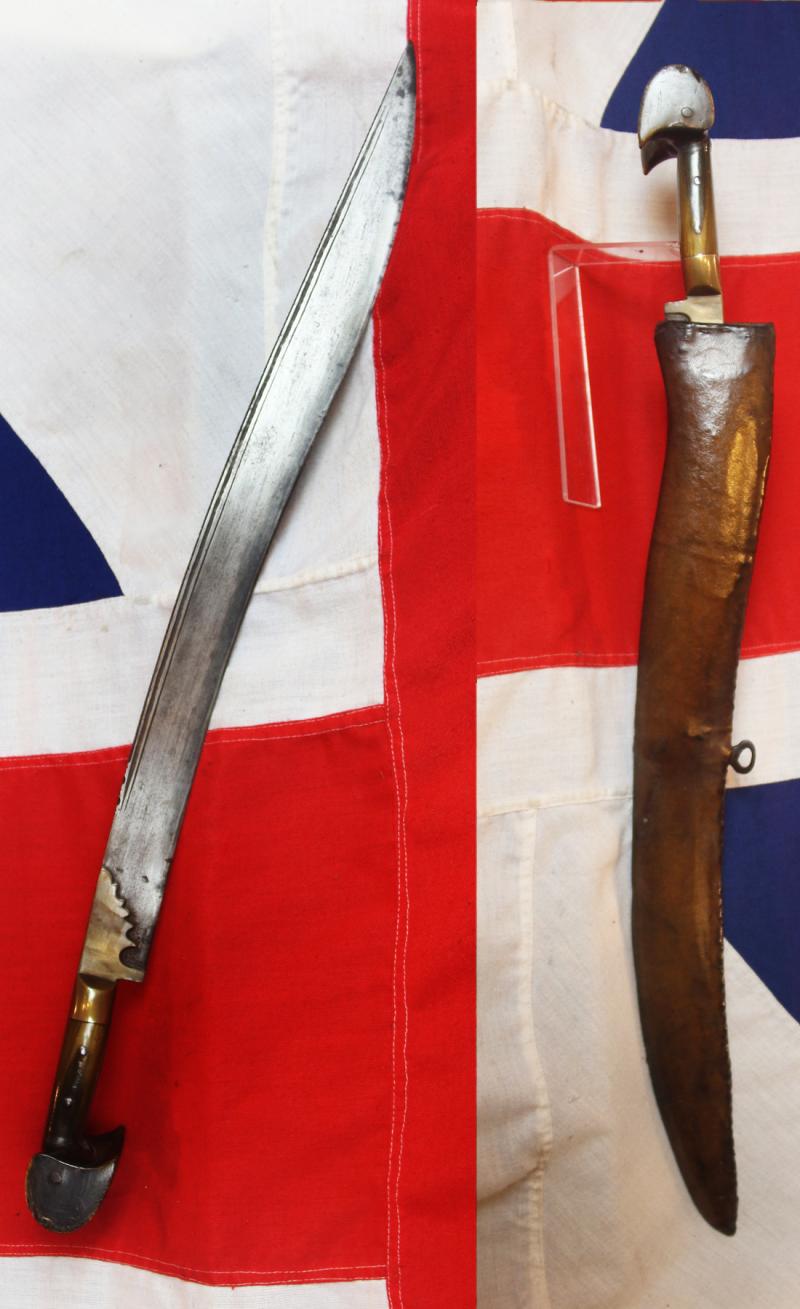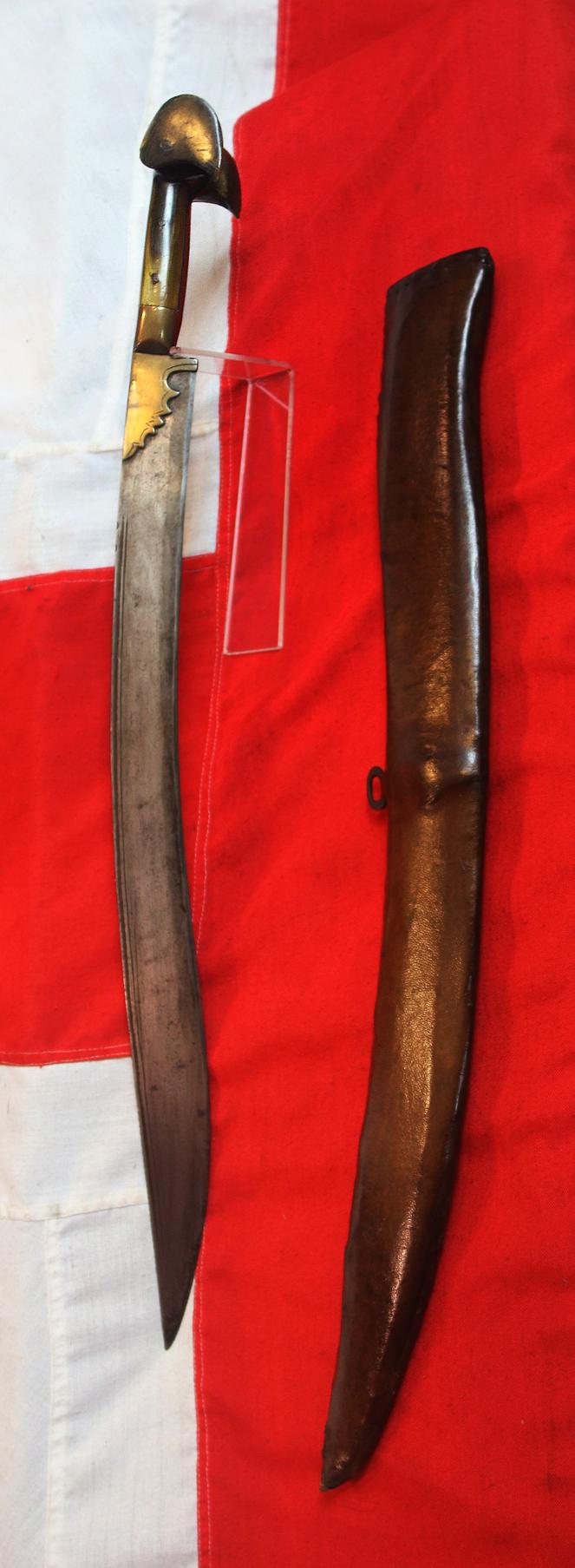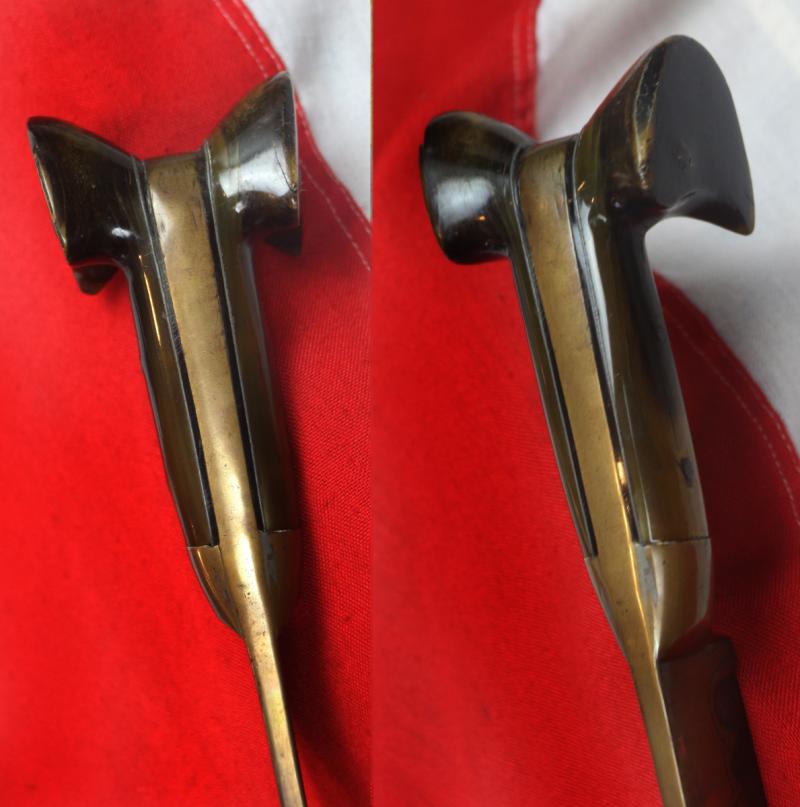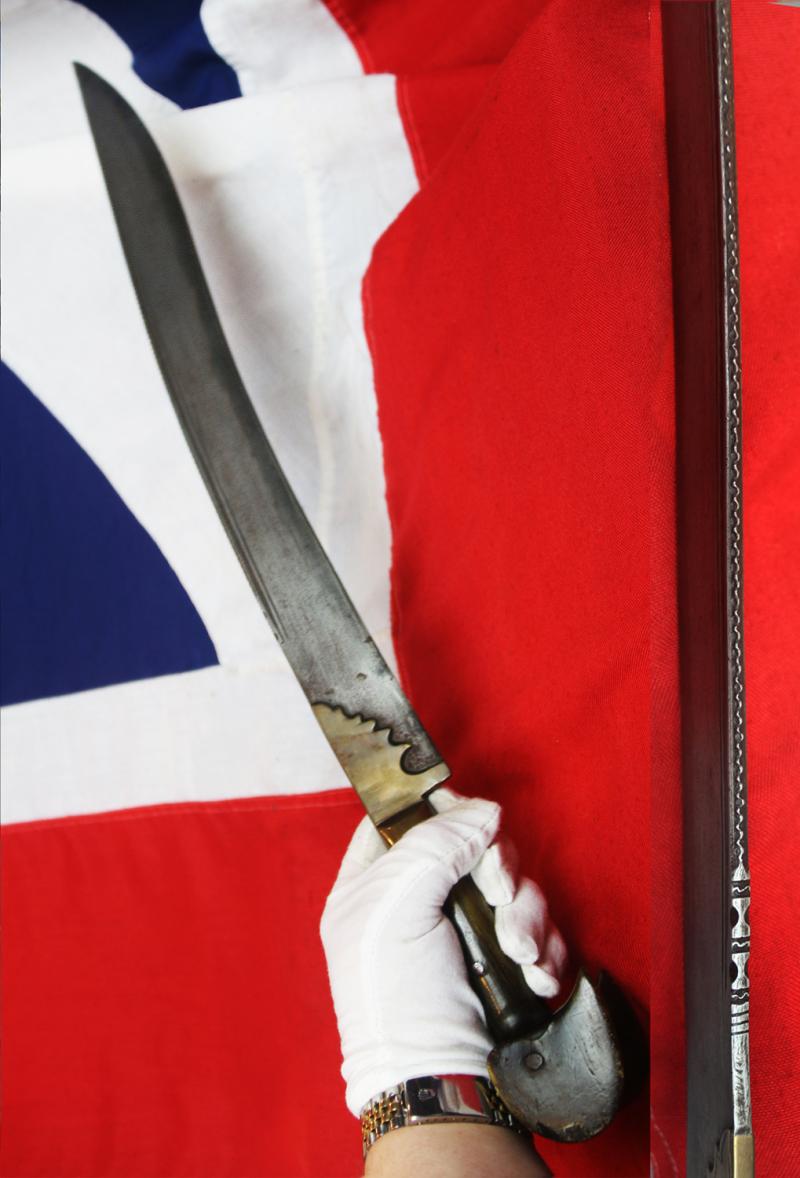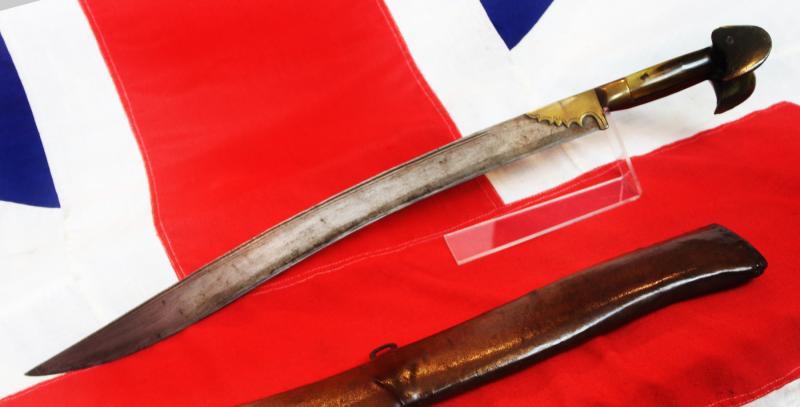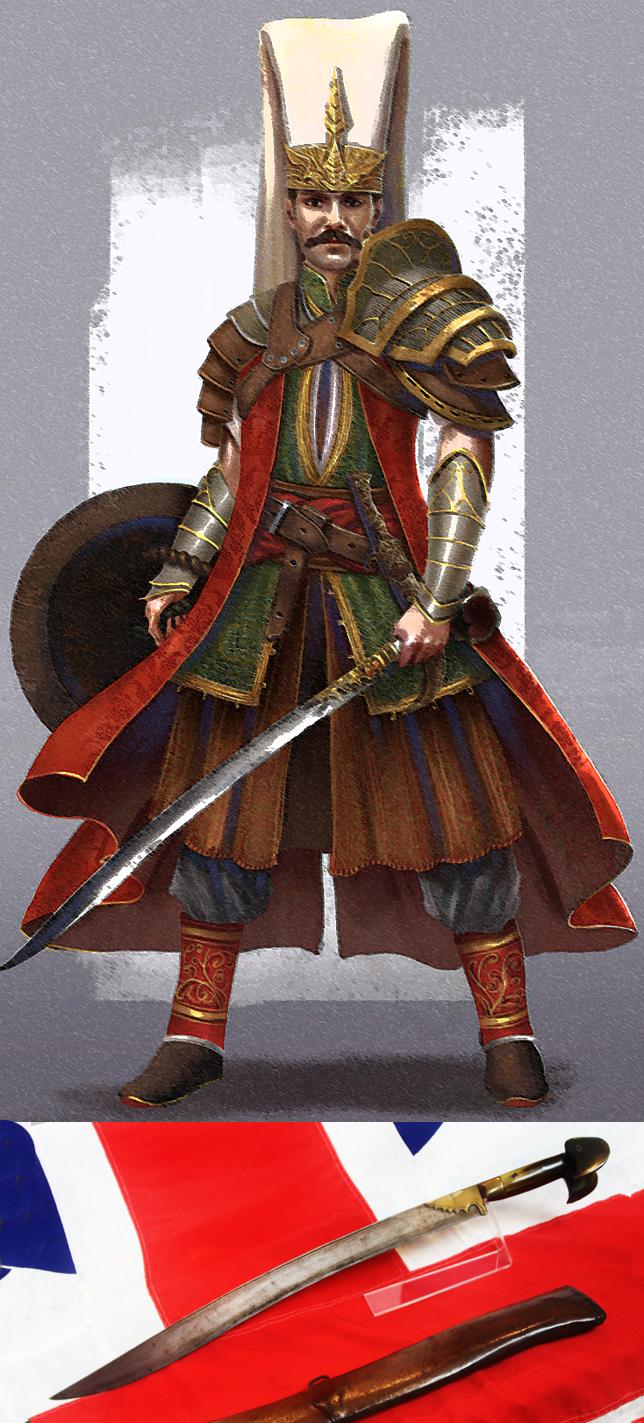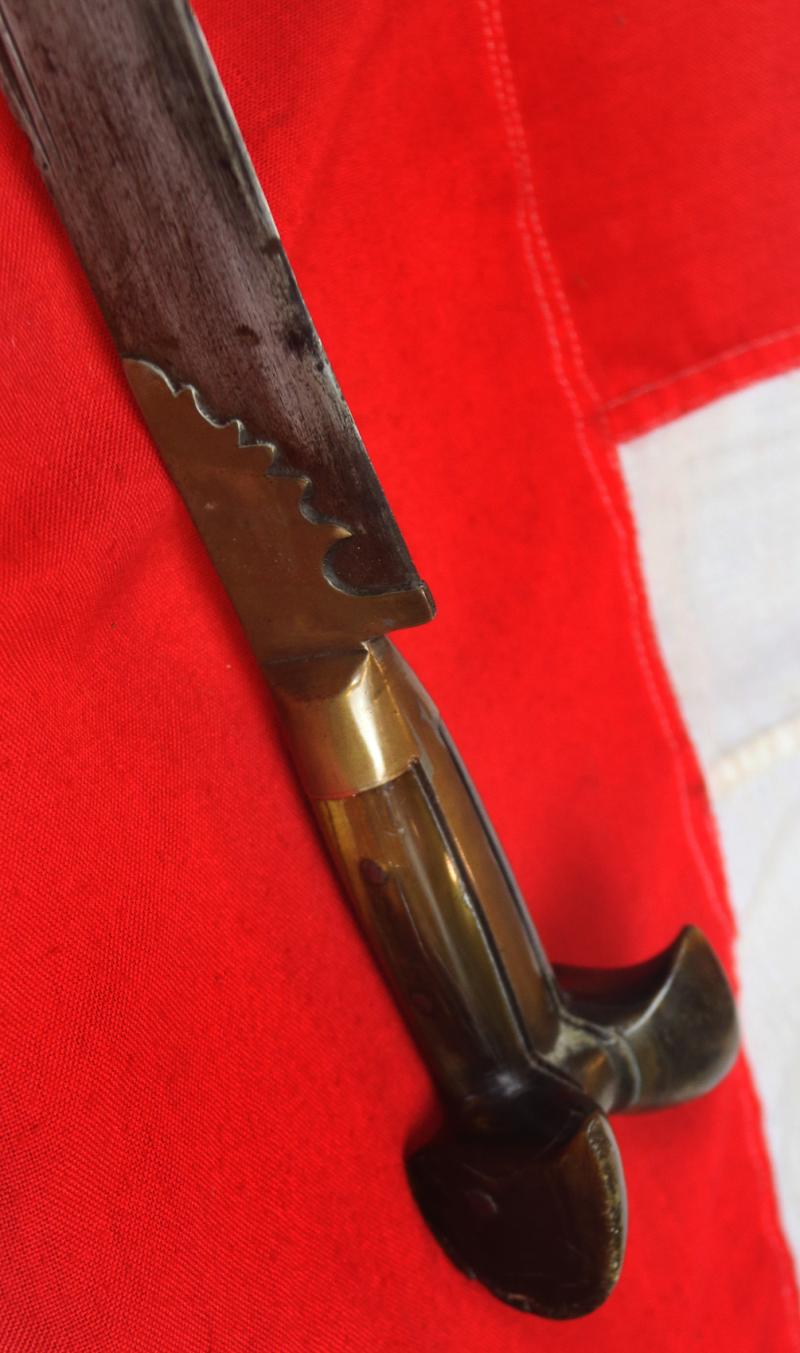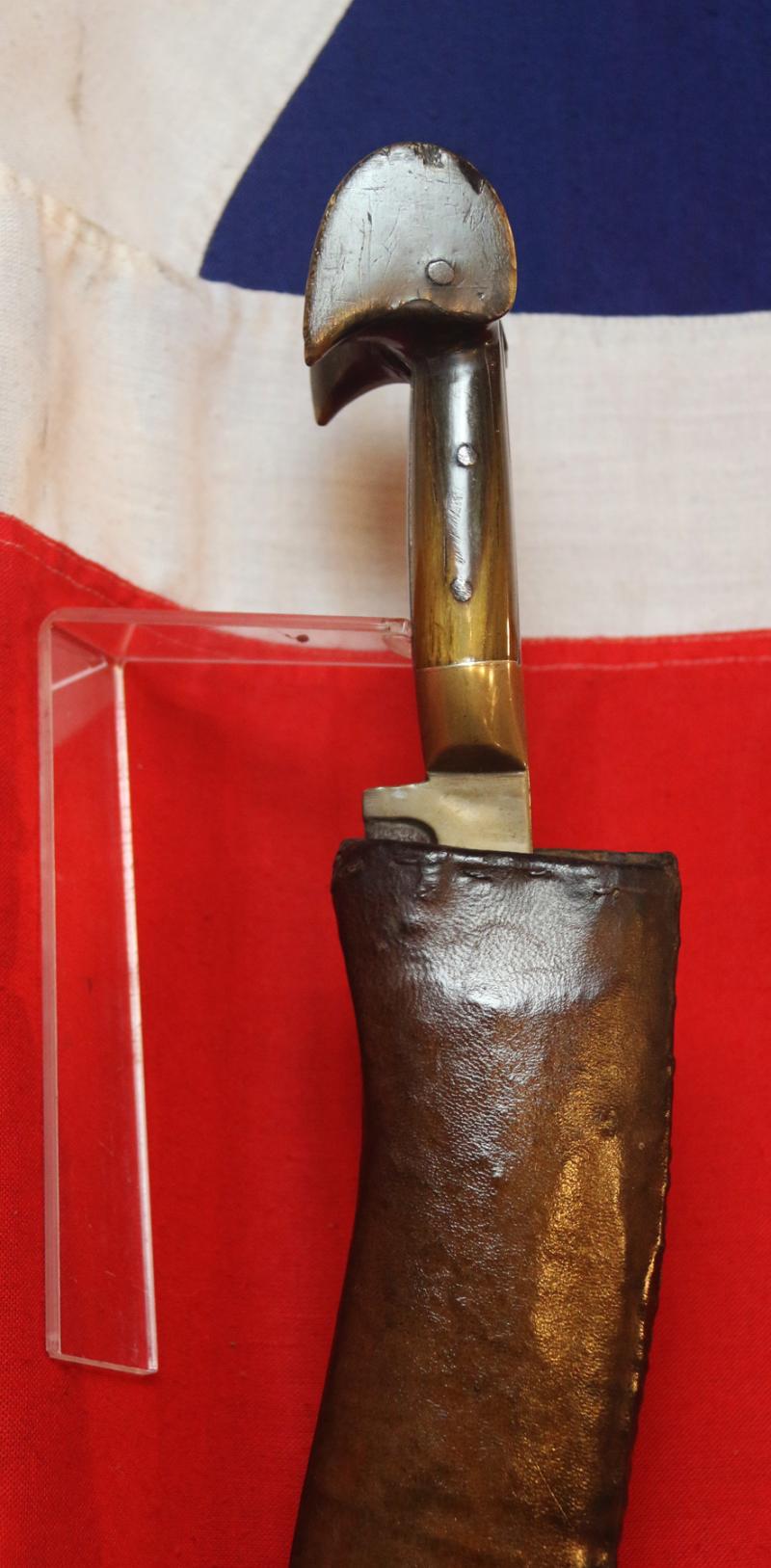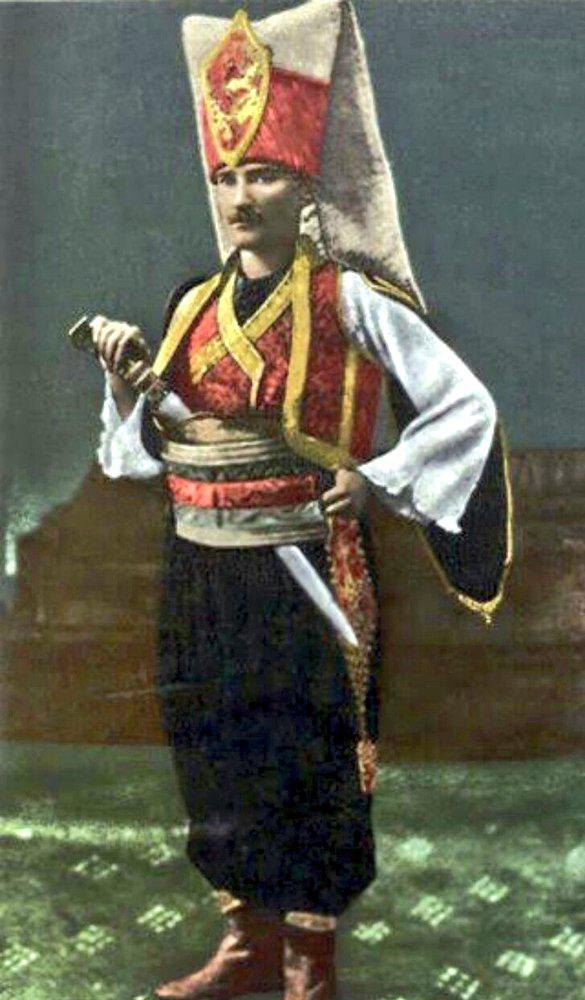A Most Fine 18th to Early 19th Century Ottoman Empire Jannisaries Yatağan Sword, Carved Horn 'Eared' Hilt & Original Hide Covered Wooden Combat Scabbard
Overall in superb condition, the patina on both the hilt and leather scabbard is exceptional. The carved horn eared hilt is composed of two carved horn grip plates attached by three iron rivets, and is very fine indeed. It has a naturally patinated brass, fully encompassing, reinforcing strap that forms into the ricasso and shaped blade plate. The yataghan form blade, in the traditional form, is beautifully geometrically engraved upon the back edge. The polished hide covered wooden scabbard has an iron belt loop fixing. The Yatağan sword is a Turkish sword that is believed to have originated sometime in the late middle ages, around the 14th century. The first authentic findings that there are for the Yatağan are from the 15th century belonging to Suleiman the Magnificent. That sword has an inscription written on it dating it to 1526.
The formation of the Janissaries has been dated to the reign of Murad I (r. 1362–1389), the third ruler of the Ottoman Empire. The Ottomans instituted a tax of one-fifth on all slaves taken in war, and from this pool of manpower the sultans first constructed the Janissary corps as a personal army loyal only to the sultan. They were subjected to strict discipline, but were paid salaries and pensions upon retirement and formed their own distinctive social class. As such, they became one of the ruling classes of the Ottoman Empire, rivalling the Turkish aristocracy. The brightest of the Janissaries were sent to the palace institution, Enderun. Through a system of meritocracy, the Janissaries held enormous power, stopping all efforts to reform the military
Yatağan was widely used in the Ottoman period from the 16th century to the 19th century; is a famous and effective sword. It is also known as the Turkish Sword among foreigners and Kulakli among the people. Yatagan was a weapon of janissaries and other infantry troops.
The centre of gravity of the sword, the angle known as the Turkish curve in making swords, and the ideal strokes are difficult to use because they differ from other swords. The reason for this difference in form is to swing the enemy’s sword strokes more easily. But the destruction and chiselling power of a good user is much higher than that of contemporary swords. Although the motives and writings in Yatağan are sometimes a poem and sometimes a concise word, mostly the verses, the name of the owner of the sword, the prayers and the seal of the master making the sword are seen.
The Yatagan was mostly used by soldiers known as the Janissaries. These soldiers often had to walk long distances to defend the empire or expand its borders. That is why the scabbard was mostly made out of leather so that it would be light. It was usually carried on the side or the back of the belt.
The scabbard of the Yatagan is curved just like the blade and made wider than needed so the broadened tip can easily fit inside. It was made out of wood, leather, and even silver. It was also usually heavily decorated, especially if it was owned by a nobleman.
The Yatagan is truly a one-of-a-kind sword. There simply doesn’t seem to be a sword that can compare to it during the time period it was used. The inwardly curved blade, the lack of a crossguard, and the “ears” all contribute to the item’s one-of-a-kind appearance.
It is possible that the Greek Kopis and, in particular, the Iberian Falcata or Sica had some sort of influence on the Yatagan. However, these swords hadn’t been used for almost a thousand years by the time the Yatagan began to see use in the 14th to 19th centuries.
This sword was used throughout many regions of the Ottoman Empire that it has several different legends connected to its origins. One of the legends is about Yatagan Baba. This was a Seljuk blacksmith as well as a military commander. He conquered a village in modern-day Denizli, Turkey, and made his new home there. Being a master blacksmith, Yatagan Baba developed the Yatagan sword, which was named after him and the village he conquered.
Another legend is that at one point during the Ottoman Period, the sultan had forbidden the use of long swords by the Janissaries in peacetime because of their insubordination. They were then forced to improvise, and ordered weapons made that didn’t technically constitute a long sword.
Last photo in the gallery of Mustafa Kemal Atatürk wearing the traditional Janissary uniform Turkish yatagan swords that were the signature weapon of the Janissaries, almost a symbol of the corps.
Code: 25041
1495.00 GBP

